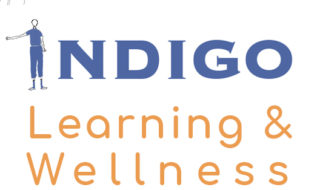Multisensory Learning
Multisensory learning involves a comprehensive program that integrates visual, auditory, and tactile/kinesthetic modes of learning. Since skills in reading, writing, and mathematics involve different areas of the brain connecting and working together, multisensory learning encourages more blood flow to the brain and increased brain connectivity. With more blood flow to the brain, students are also able to focus and retain their attention to learn for longer periods of time.
In the 1920’s and 1930’s, Dr Samuel Orton and his colleagues, inspired by Helen Keller’s kinesthetic method of language, introduced the idea that incorporating kinesthetic methods to visual and auditory associations could help correct students’ confusion regarding letters, sounds, and sequencing in language. Gillingham and Stillman later followed up this theory by offering a structured set of multisensory techniques to teach the sounds, meanings, parts of speech, and common spelling rules of English. For almost 100 years, these techniques have shown to be effective ways of teaching students with dyslexia and language-based learning differences.
Often times students with dyslexia have developed inefficient neural pathways, which requires 4-12 times the energy to read. However, systematic multisensory reading instruction has been shown to create and strengthen more efficient neural pathways. After remediation, students have shown to use only 1.8 times more energy to read.
Brain scans also reveal that students with dyslexia have specific areas of the brain linked to language and reading that are under-working, most often the auditory region where phonemes are processed or the visual processing region where word recognition occurs. Areas of the brain have also been seen to contain a large number of ectopias, or clumps of neurons that act as a barrier to receiving and transmitting neural connections (dyslexic brains may have 30-40 ectopias, whereas a typical brain usually has less than 10).
However, by stimulating more areas of the brain through multisensory learning, students are able to create stronger and more efficient neural pathways connected to these regions. Brain scans also show that after systematic remediation, the areas of the brain that were before seen to be deficient showed much more activity. Long-term studies demonstrated that this difference in brain activity remained permanent.
Common methods of multisensory learning with dyslexic students includes air writing (using large muscle groups), magnetic tiles to manipulate and make words, tapping sounds and syllables, visualizations, marching, clapping, jumping, and ball tossing. All of these methods allow students to connect visual, auditory, and kinesthetic pathways simultaneously.
However, I am also interested in broadening the idea of multisensory learning to all of Howard Gardner’s multiple intelligences. Many times students with dyslexia have a strong visual-spatial intelligence, for example, and benefit from seeing and manipulating visuals with different colors, sizes, and arrangements. Musical students benefit from singing, drumming, or using rhythms to encourage memorization and phonological awareness. Students with strong interpersonal skills can use this as an advantage, by playing games or reading books with partners or in small groups. All of these modes of learning will not only bring more engagement and concentration, but will also help dyslexic students develop new and more efficient ways of using their brains in order to read.
